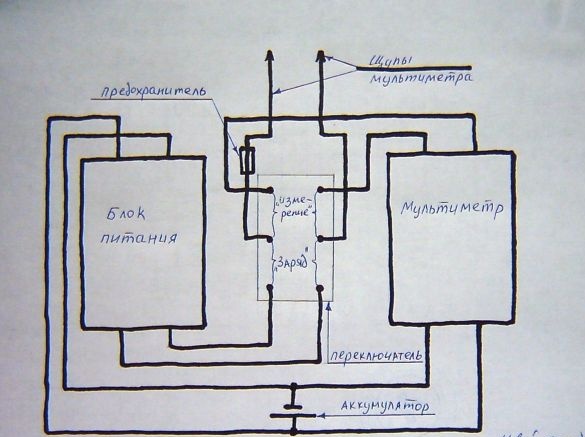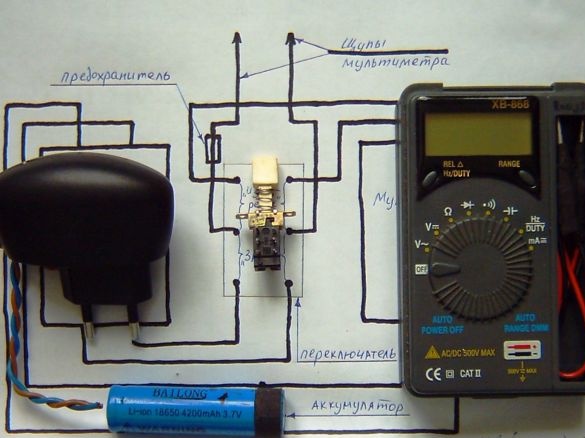It often happens that the battery in the multimeter is discharged. Here it would be necessary to put the battery in and periodically pull it out and charge ... Charging through the USB port is also not convenient and not interesting.
I propose a multimeter charging circuit using the instrument’s own probes.
It’s not bad to place everything in one case (a power supply with 22o, charging), a power supply and a button in the multimeter. And in order to charge the calculator, you just need to press the “charge” button and connect the probes to the 220 V socket ...
The fuse here protects against accidental "not pressing a button" ... although here everything can be done automatically (with a protection relay) ...
More intuitive diagram:


